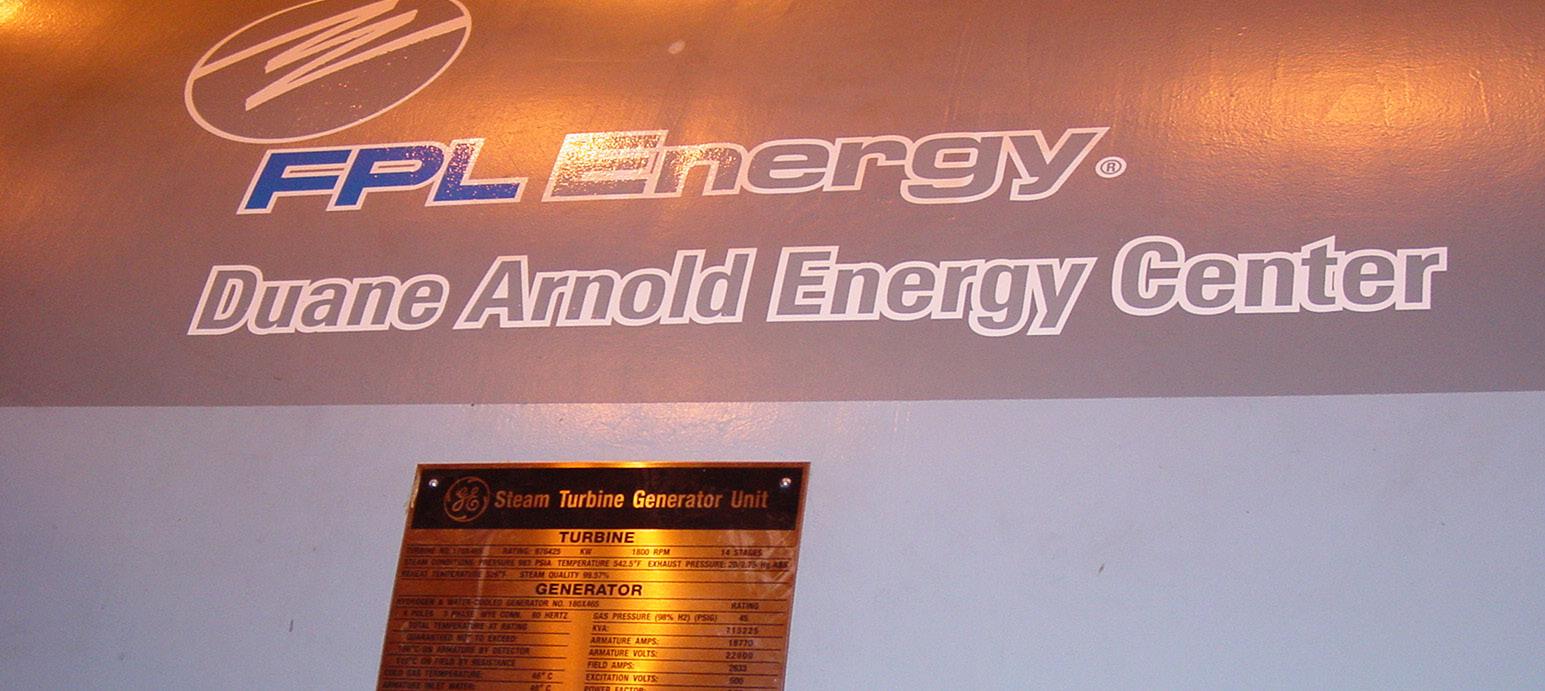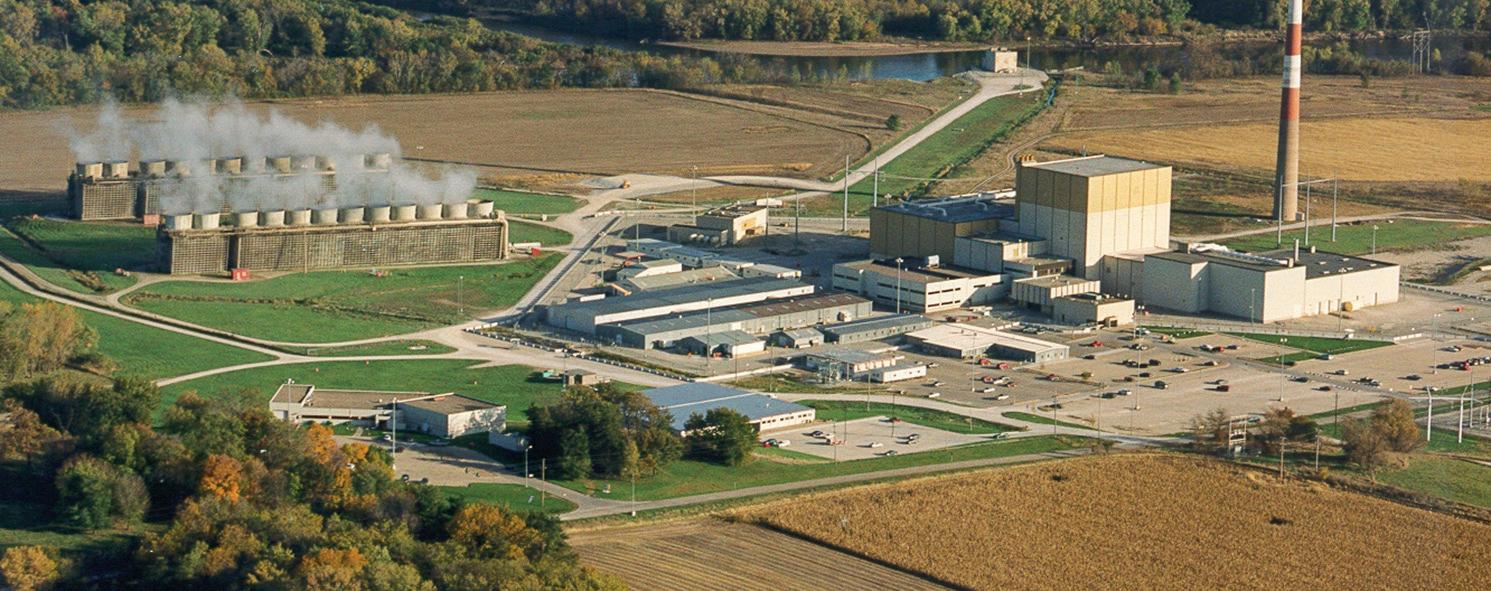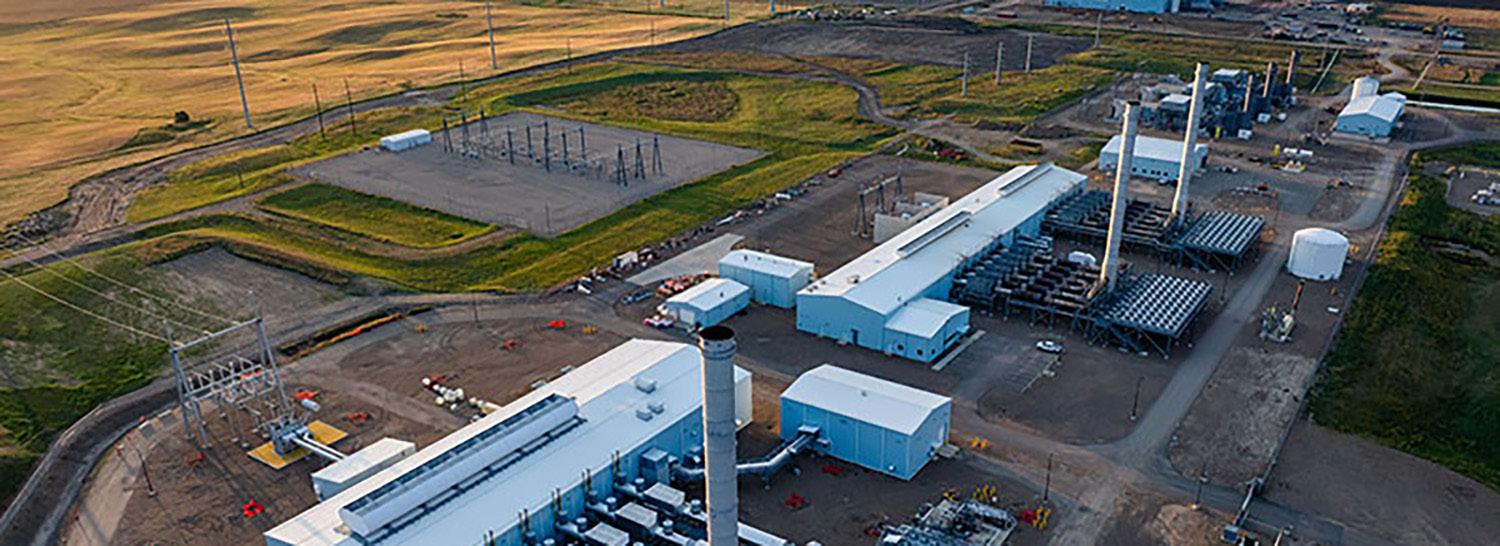

NextEra agrees to acquire Corn Belt Power’s ownership stake in Duane Arnold Energy Center
NextEra Energy announced Oct. 26, two transformative agreements with Google, which will strengthen U.S. nuclear leadership and help meet growing energy demand from artificial intelligence with clean, reliable nuclear energy.
The cornerstone of this collaboration is the planned restart of the Duane Arnold Energy Center, Iowa’s only nuclear facility, which is located in Palo, near Cedar Rapids. Once operational, Google will purchase power from the 615-MW plant as a 24/7 carbon-free energy source to help power Google’s growing cloud and AI infrastructure in Iowa, while also strengthening local grid reliability, creating thousands of direct and indirect jobs, and driving significant economic investment to the Midwest region.
In addition to Google’s 25-year agreement to purchase carbon-free nuclear energy from the DAEC plant, one of the plant’s current minority owners, Central Iowa Power Cooperative, will purchase the remaining portion of the plant’s output on the same terms as Google. NextEra Energy has signed definitive agreements to acquire CIPCO and Corn Belt Power Cooperative’s combined 30% interest in the plant, which will bring NextEra Energy’s ownership to 100%. DAEC, which was shut down in 2020, is expected to be online and delivering electricity onto the grid by the first quarter of 2029, pending regulatory approvals to restart the plant.
“After months of discussion and careful consideration with our board of directors, Basin Electric Power Cooperative, and NextEra, we concluded that selling our ownership interest was the right decision for the Corn Belt membership,” said Jacob Olberding, executive vice president and

general manager, Corn Belt Power. “Our partnership with NextEra has benefited Corn Belt Power and our member-owners for many years. This decision not only minimizes risk for our organization and our primary power supplier, Basin Electric, but also helps NextEra and Google take the next steps in returning the plant to operation.”
The power purchase agreement with Google enables the investment to restart the plant and covers costs for the production of energy from DAEC. Restarting the plant will increase generation capacity for the region and Iowa energy customers will not bear any costs associated with the power Google purchases from the facility. NextEra Energy’s strategic investments in nuclear and advanced generation help position Google to deploy AI that can grow the American economy, create jobs, accelerate scientific advances, improve health and educational outcomes, and strengthen national and global security.
To that end, NextEra Energy and Google have also signed an agreement to explore the development of new nuclear generation to
be deployed in the U.S., which would help power America’s growing electricity needs.
“Restarting Duane Arnold marks an important milestone for NextEra Energy,” said John Ketchum, chairman and CEO of NextEra Energy. “Our partnership with Google not only brings nuclear energy back to Iowa — it also accelerates the development of next-generation nuclear technology. Thanks to the leadership of the Trump Administration, Google and NextEra Energy are answering the call of America’s golden age of power demand, creating thousands of jobs, strengthening Iowa’s economy, delivering long-term value to our shareholders and helping power America’s future through innovation and technology.”
“Building on two decades of work in Iowa, including our recent $7 billion investment in the state this May, Google is proud to partner with NextEra Energy to reopen the Duane Arnold Energy Center – a project that will deliver nuclear energy and hundreds of new job opportunities in the Hawkeye State by the beginning of 2029,” said Ruth Porat, Continued on page 4...
Above | NextEra Energy announced Oct. 26 that they've reached a definitive agreement to acquire Corn Belt Power and Central Iowa Power Cooperative's 30% interest stake in Duane Arnold Energy Center. Also, Google will purchase power from the 615-MW plant once it restarts in 2029.
Duane Arnold Energy Center
Planning ahead: Why wholesale power costs are rising in 2026

In September, the Basin Electric Power Cooperative Board of Directors – Corn Belt Power’s power supplierauthorized a wholesale power rate increase of approximately 10% effective Jan. 1, 2026.
Corn Belt Power understands the significance of this decision and the impact it will have on our members and our communities. This was a decision not made lightly by the Basin Electric Board.
For years, electric cooperative members have enjoyed mostly-stable rates. That stability didn’t happen by chance—it’s the result of long-term, forward-thinking investments made 40 or more years ago in the power plants, transmission lines and infrastructure we rely on today. Those investments have served us well, but many aspects of that system are now nearing the end of their useful life. At the same time, our communities are using more electricity than ever before to power homes, farms and businesses. To keep reliability strong and prepare for future growth, it’s time to reinvest—just as those before us did. Unfortunately, planning for the future requires large amounts of capital, which will result in upward pressure on rates.
Over the next 10 years, Basin Electric’s load growth is projected to increase by 2.5% annually—well above the national average. To serve that growth, Basin Electric will invest an estimated $11 billion in capital expenditures, more than doubling its assets. These investments will increase Basin Electric’s dispatchable generation by 50% and expand its transmission system by more than 30%. Dispatchable generation – coal, natural gas, etc. – is critical to our electric
grid because it’s power that can be turned on or off to match demand on the system, keeping power supply steady and reliable.
At the same time, the cost of building new infrastructure has risen dramatically. The book value of generation assets that make up our current fleet average $800 per kilowatt. Future generation assets are projected to cost $2,700 per kilowatt. Similarly, the book value of the transmission assets that reliably deliver power across our footprint average approximately $400,000 per mile, but future projects are expected to cost around $2 million per mile.
In addition, through 2024, Basin Electric and its subsidiaries have already invested more than $2 billion of member capital in environmental control technology, with $190 million spent in 2024 alone to operate and maintain those systems.
How generation built in other states benefits Iowa electric cooperative members
Although some of Basin Electric’s new generation like the Pioneer and Bison generation stations are being built in North Dakota, the benefits reach all members across Basin’s nine-state service area, including right here in Iowa. It’s the same way we benefit from hydropower dams on the Missouri River through Montana, North Dakota and South Dakota.
Basin Electric operates as one interconnected system. The cooperative’s generation and transmission resources are pooled and managed together to serve the entire membership. When new generation comes online, it strengthens the reliability of the entire system, providing more
stability and flexibility no matter where the electricity is consumed.
Building new dispatchable generation in North Dakota also takes advantage of existing low-cost fuel supply chains, interconnection with a robust transmission network, and geographic diversity. This strategic placement helps manage costs and ensures power can flow where it’s needed most—whether that’s in North Dakota, Iowa, or any other part of our region— especially during times of high demand or extreme weather.
Basin Electric’s new generation strengthens the entire membership through:
Improved reliability: More dispatchable generation on the system reduces the risk of shortages or outages, especially during peak conditions.
Cost stability: Building where infrastructure and fuel access already exist helps keep project costs—and therefore future rates—lower for everyone.
Energy security: Diverse geographic locations mean Basin Electric can keep delivering power even if one area experiences supply or weather challenges. Shared cooperative value: Because Basin Electric is owned by its members, every investment is made to serve the entire membership.
Above | Basin Electric's new Bison Generating Station increases reliability for Iowa co-op members.
Iowa electric cooperatives deliver strong message in Washington D.C.
In late September ahead of the government shutdown, staff from six Iowa electric cooperatives and the Iowa Association of Electric Cooperatives (IAEC), traveled to Washington, D.C., to meet with Iowa’s Congressional offices.
The team met with Senator Chuck Grassley, staff from the five other congressional offices, and key policy experts from the U.S. House Agriculture Committee and the National Rural Electric Cooperative Association (NRECA). This group focused their conversations on the issues facing Iowa electric cooperatives and the communities we serve.
One of the main topics discussed was the Fixing Emergency Management for Americans (FEMA) Act of 2025, a bill aimed at improving how the Federal Emergency Management Agency (FEMA) responds to disasters. The legislation proposes streamlining the process for electric cooperatives to access federal funding after storms and other emergencies. The Iowa team emphasized that these reforms would reduce financial strain on co-ops and strengthen the resilience of rural communities. They also explained to congressional offices that without FEMA support, Iowa electric coops will have to shoulder the cost of storm recovery through increased rates to recover those costs.
Co-op advocates also underscored the vital role the U.S. Department of Agriculture (USDA) plays to help fund infrastructure projects and support local economic development. Programs like Rural Utilities Service (RUS) electric loans provide lowinterest financing that allows Iowa electric co-ops to upgrade and maintain the electric


grid. These improvements are critical for ensuring reliable, affordable electricity in rural areas, where the cost of infrastructure is often higher due to lower population density.
Additionally, our fly-in team discussed the value of the Rural Economic Development Loan and Grant (REDLG) program which helps Iowa electric co-ops go beyond electricity by supporting broader community development. Through REDLG, Iowa electric co-ops can offer loans or grants to local businesses, schools, and hospitals which are used to create jobs, expand services and strengthen rural economies. The group shared several real-life examples of how these initiatives have made a
difference in their Iowa communities. These stories help lawmakers see the tangible value of continued federal investment in rural infrastructure and development.
The Iowa electric co-op staff members brought extensive experience and were able to share firsthand how these federal programs benefit electric co-ops and the communities we serve. Despite the looming threat of a government shutdown, our team delivered compelling stories and clear policy asks for the programs most critical to Iowa’s electric cooperatives. The momentum from these discussions will carry into the spring, when Iowa electric co-op representatives return to Washington in greater numbers for NRECA’s 2026 Legislative Conference.

Above | Brittany Dickey (third from left), vice president, business development, represented Corn Belt Power at October's Legislative Fly-In Sept. 30. Topics discussed included FEMA, the Rural Utilities Service and the Rural Economic Development Loan and Grant program.
Jennifer Arndorfer, human resources specialist, shares new Corn Belt Power Cooperative insurance offerings and benefits at the allemployee safety meeting October 16.

October Touchstone Energy Volunteer Challenge winner | Scott Hagenson, line superintendent, Franklin REC, won this month's Volunteer Challenge. He donated his $100 prize to the Iowa Firefighters Memorial.
NextEra ownership stake
Continued from page 1... president and chief investment officer of Alphabet and Google. “This partnership serves as a model for the investments needed across the country to build energy capacity and deliver reliable, clean power, while protecting affordability and creating jobs that will drive the AI-driven economy.”
This announcement highlights NextEra Energy and Google’s longstanding relationship. NextEra Energy now has nearly 3 GW of energy projects executed with Google across the country, reinforcing its role of providing energy solutions to meet Google’s needs.
“Iowa isn’t just a place to build; it’s a place to lead. Today’s exciting announcement from NextEra Energy and Google further cements Iowa’s leadership in powering America’s AI infrastructure,” stated Iowa Gov. Kim Reynolds. “Meeting the demands of emerging technologies requires reliable, clean energy and the Duane Arnold nuclear facility is ideally positioned to deliver it. By advancing nuclear energy and AI innovation together, Iowa is shaping a sustainable digital future that drives economic growth, strengthens communities and keeps America competitive.”
“Bringing Duane Arnold back online is a big win for Linn County and the entire state of Iowa,” said State Sen. Charlie McClintock, who represents Iowa’s 42nd district. “Kids would watch their parents work at the plant and then grow up and work there themselves. Now, we’re
bringing back multigenerational local jobs. This announcement shows that Iowa can support all forms of energy, and we can keep the lights on for our residents’ homes and local businesses, as well as the companies that we welcome to the Hawkeye State.”
The DAEC restart follows a rigorous engineering evaluation, community engagement and close coordination with federal, state and local authorities. NextEra Energy is working proactively with the Nuclear Regulatory Commission and other governmental authorities to ensure a safe, timely and compliant return to service.


